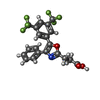Entry Database : PDB / ID : 7b9oTitle Crystal structure of Retinoic Acid Receptor alpha (RXRA) in complexed with S169 inhibitor Nuclear receptor coactivator 2 Retinoic acid receptor RXR-alpha Keywords / / / / Function / homology Function Domain/homology Component
/ / / / / / / / / / / / / / / / / / / / / / / / / / / / / / / / / / / / / / / / / / / / / / / / / / / / / / / / / / / / / / / / / / / / / / / / / / / / / / / / / / / / / / / / / / / / / / / / / / / / / / / / / / / / / / / / / / / / / / / / / / / / / / / / / / / / / / / / / / / / / / / / / / / / / / / / / / / / / Biological species Homo sapiens (human)Method / / / Resolution : 2.05 Å Authors Ni, X. / Chaikuad, A. / Schierle, S. / Merk, D. / Knapp, S. / Structural Genomics Consortium (SGC) Journal : J.Med.Chem. / Year : 2021Title : Oxaprozin Analogues as Selective RXR Agonists with Superior Properties and Pharmacokinetics.Authors : Schierle, S. / Chaikuad, A. / Lillich, F.F. / Ni, X. / Woltersdorf, S. / Schallmayer, E. / Renelt, B. / Ronchetti, R. / Knapp, S. / Proschak, E. / Merk, D. History Deposition Dec 14, 2020 Deposition site / Processing site Revision 1.0 Feb 10, 2021 Provider / Type Revision 1.1 Apr 14, 2021 Group / Category / citation_authorItem _citation.country / _citation.journal_abbrev ... _citation.country / _citation.journal_abbrev / _citation.journal_id_ASTM / _citation.journal_id_CSD / _citation.journal_id_ISSN / _citation.pdbx_database_id_DOI / _citation.pdbx_database_id_PubMed / _citation.title / _citation.year Revision 1.2 May 5, 2021 Group / Category / citation_authorItem _citation.journal_volume / _citation.page_first ... _citation.journal_volume / _citation.page_first / _citation.page_last / _citation_author.identifier_ORCID Revision 1.3 Aug 17, 2022 Group / Derived calculationsCategory database_2 / pdbx_struct_assembly ... database_2 / pdbx_struct_assembly / pdbx_struct_assembly_gen / pdbx_struct_assembly_prop / pdbx_struct_oper_list Item _database_2.pdbx_DOI / _database_2.pdbx_database_accession ... _database_2.pdbx_DOI / _database_2.pdbx_database_accession / _pdbx_struct_assembly.details / _pdbx_struct_assembly.method_details / _pdbx_struct_assembly.oligomeric_count / _pdbx_struct_assembly.oligomeric_details / _pdbx_struct_assembly_gen.asym_id_list / _pdbx_struct_oper_list.matrix[1][2] / _pdbx_struct_oper_list.matrix[3][3] / _pdbx_struct_oper_list.name / _pdbx_struct_oper_list.symmetry_operation / _pdbx_struct_oper_list.vector[1] / _pdbx_struct_oper_list.vector[2] / _pdbx_struct_oper_list.vector[3] Revision 1.4 Jan 31, 2024 Group / Refinement descriptionCategory / chem_comp_bond / pdbx_initial_refinement_model
Show all Show less
 Yorodumi
Yorodumi Open data
Open data Basic information
Basic information Components
Components Keywords
Keywords Function and homology information
Function and homology information Homo sapiens (human)
Homo sapiens (human) X-RAY DIFFRACTION /
X-RAY DIFFRACTION /  SYNCHROTRON /
SYNCHROTRON /  MOLECULAR REPLACEMENT / Resolution: 2.05 Å
MOLECULAR REPLACEMENT / Resolution: 2.05 Å  Authors
Authors Citation
Citation Journal: J.Med.Chem. / Year: 2021
Journal: J.Med.Chem. / Year: 2021 Structure visualization
Structure visualization Molmil
Molmil Jmol/JSmol
Jmol/JSmol Downloads & links
Downloads & links Download
Download 7b9o.cif.gz
7b9o.cif.gz PDBx/mmCIF format
PDBx/mmCIF format pdb7b9o.ent.gz
pdb7b9o.ent.gz PDB format
PDB format 7b9o.json.gz
7b9o.json.gz PDBx/mmJSON format
PDBx/mmJSON format Other downloads
Other downloads 7b9o_validation.pdf.gz
7b9o_validation.pdf.gz wwPDB validaton report
wwPDB validaton report 7b9o_full_validation.pdf.gz
7b9o_full_validation.pdf.gz 7b9o_validation.xml.gz
7b9o_validation.xml.gz 7b9o_validation.cif.gz
7b9o_validation.cif.gz https://data.pdbj.org/pub/pdb/validation_reports/b9/7b9o
https://data.pdbj.org/pub/pdb/validation_reports/b9/7b9o ftp://data.pdbj.org/pub/pdb/validation_reports/b9/7b9o
ftp://data.pdbj.org/pub/pdb/validation_reports/b9/7b9o

 Links
Links Assembly
Assembly

 Components
Components Homo sapiens (human) / Gene: RXRA, NR2B1 / Production host:
Homo sapiens (human) / Gene: RXRA, NR2B1 / Production host: 
 Homo sapiens (human) / References: UniProt: Q15596
Homo sapiens (human) / References: UniProt: Q15596 X-RAY DIFFRACTION / Number of used crystals: 1
X-RAY DIFFRACTION / Number of used crystals: 1  Sample preparation
Sample preparation SYNCHROTRON / Site:
SYNCHROTRON / Site:  SLS
SLS  / Beamline: X06SA / Wavelength: 1 Å
/ Beamline: X06SA / Wavelength: 1 Å Processing
Processing MOLECULAR REPLACEMENT
MOLECULAR REPLACEMENT Movie
Movie Controller
Controller


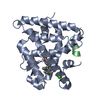


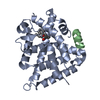
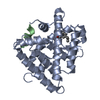
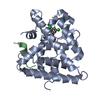
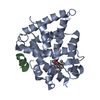
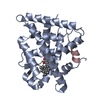


 PDBj
PDBj










